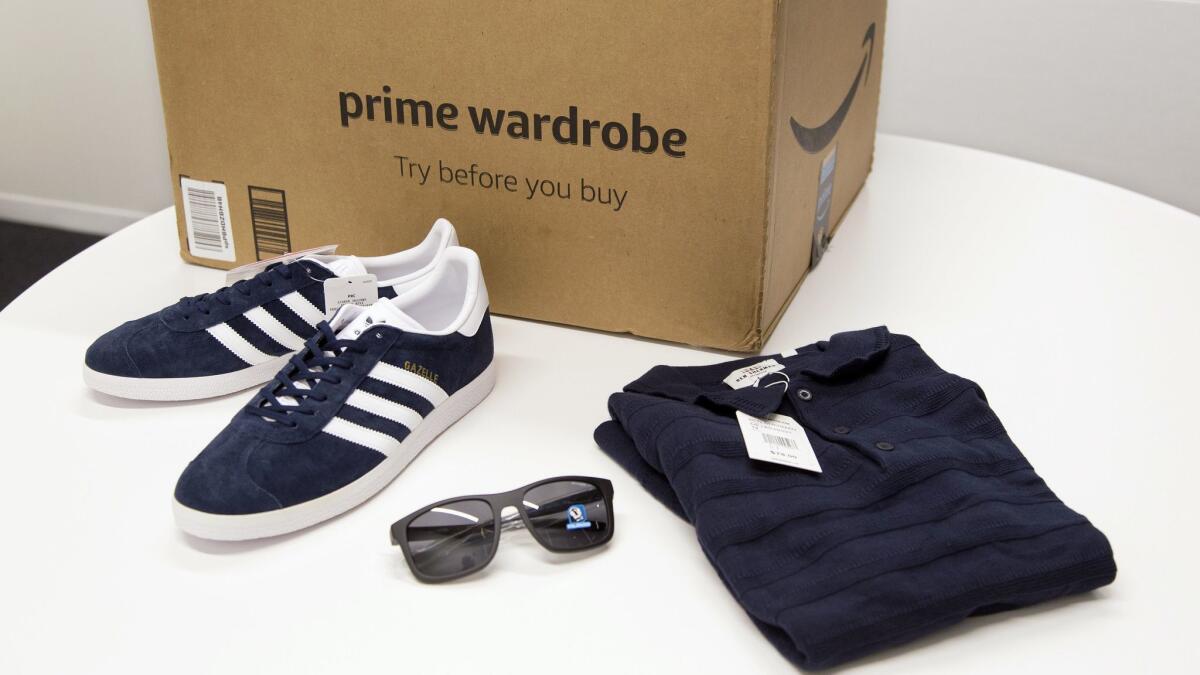Don’t let ‘try before you buy’ bust your budget

Services such as Stitch Fix and Amazon’s Prime Wardrobe have put try-before-you-buy shopping on the map. The concept is simple: Shoppers get apparel, accessories or other goods delivered to try, which they can either send back or purchase.
“For many customers who do not enjoy the hustle and bustle of driving to the mall, parking, going through shelves, picking out items and hitting a dressing room, perusing from the comfort of the couch and selecting items to be delivered to the door to try on can be very convenient,” said Casey Taylor, a partner in the retail practice of Bain and Co., a global management consultancy.
But sneaky fees and easy-to-miss return windows can lead shoppers to spend more than they bargained for. Here’s how to take advantage of try-before-you-buy shopping while leaving your budget unscathed.
Watch out for nonrefundable fees
“Try before you buy” isn’t always as straightforward as it sounds. In some cases, just because you choose to try an item rather than purchase it upfront doesn’t mean it won’t cost anything — even if you send it back.
The personalized styling service Stitch Fix charges a $20 styling fee for each shipment. That fee gets credited toward any item you keep from the box, but it will not be refunded if you return everything. Nordstrom’s Trunk Club has a $25 styling fee that works the same way. These fees can be dangerous because they give shoppers an incentive to keep products they might not actually want or need.
“We hate to feel like we’re losing something. If we feel like we’ve already spent money to get a service and we can get that money back with a purchase, we’re going to be kind of mentally calculating a price reduction in that item we’re considering,” said Kit Yarrow, consumer psychologist and author of “Decoding the New Consumer Mind: How and Why We Shop and Buy.”
Check retailer policies and FAQs for styling fees, shipping charges or other nonrefundable costs before you commit to a service. Yarrow recommends considering alternatives, such as making a regular online purchase with a retailer that offers free returns or limiting try-before-you-buy orders to once a season or less. That way, you’re more likely to find something you need and less likely to throw money down the drain.
Mark return deadlines
Missing the return window can leave you stuck with unwanted items and the bill to match. Take online glasses retailer Warby Parker, for example. Its free home try-on service allows shoppers to get up to five frames delivered. If a customer fails to ship the box back by the end of the trial period, five days after delivery, they’re on the hook for the full price of each frame.
This system can spell trouble for indecisive or forgetful folks.
“Maybe you think about it and you think a little too long and you end up keeping them rather than sending them back in time and so you’ve now purchased them through inertia rather than through desire,” Yarrow said.
Opt out of automatic deliveries
Amazon’s Personal Shopper by Prime Wardrobe and many other try-before-you-buy programs give consumers the option to schedule repeat deliveries. Although getting a treat on a regular basis is enticing, subscriptions often have a way of spiraling out of control. Spacing out these orders can spare your budget.
“After your fifth or sixth or seventh box, you might have all the clothes you need for a little while,” Taylor said. “Do you really need a box this month or might you do every other month or one a season?”
All this isn’t to say you should avoid try-before-you-buy shopping entirely. As with all expenses, you can approach it thoughtfully and set limits that you’re comfortable with.
“It can work if you do it the right way, which is to not overdo it, to be really specific about your objective and to not go too far down the lane of obligation,” Yarrow said.
Lauren Schwahn is a writer at personal finance site NerdWallet.
More to Read
Inside the business of entertainment
The Wide Shot brings you news, analysis and insights on everything from streaming wars to production — and what it all means for the future.
You may occasionally receive promotional content from the Los Angeles Times.










